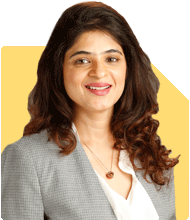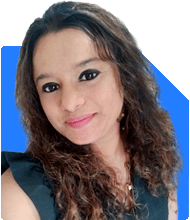43-year-old in Dubai earning 50 lacs/year seeks advice on building a house and retiring at 50
Ramalingam Kalirajan |8459 Answers |Ask -Follow
Mutual Funds, Financial Planning Expert - Answered on Nov 04, 2024
He has an MBA in finance from the University of Madras and is a certified financial planner.
He is the director and chief financial planner at Holistic Investment, a Chennai-based firm that offers financial planning and wealth management advice.... more

Sir, i am 43 year old working in a private company in Dubai. I have wife and 9 yr old son in family. I earn 50 L per year, out which 20 lacs goes as rent of apartment+ Car emi. My other expenses are 6 lacs a year. I do not have any other source of income. On the saving side, i have 50 lcs in FDs, 30 lac in Equity market, 40 lcs land, 15 lacs in gold, 10 lcs in mutual funds , 20 lcs cash in bank, 25 lcs in post office deposits. I still have to built a house in my native place in India. I want retire at the age of 50. I have employer sponsered medical insurance and no term insurance.Advise me if funds allocation needs to be altered and your view on term insurance
Assessing Your Current Asset Allocation
Fixed Deposits (FDs): Rs 50 lakhs
FDs are secure but have limited growth due to lower interest rates and higher taxes on gains. This allocation is beneficial as an emergency fund but might not serve long-term goals efficiently due to inflation.
Equity Investments: Rs 30 lakhs
Equities offer growth potential, yet they can fluctuate. As you plan to retire in seven years, you may want to rebalance for reduced risk over time. This approach ensures that market volatility does not compromise your retirement corpus.
Land Investment: Rs 40 lakhs
Real estate investment often lacks liquidity, and returns may vary based on market conditions. Since you need to build a house in India, retaining this land may be practical for your personal plans rather than as an investment vehicle.
Gold Investment: Rs 15 lakhs
Gold is a good hedge against inflation and economic uncertainties. However, it should not constitute a large portion of your portfolio as it has limited growth potential compared to other assets. Keeping some gold is reasonable, but avoid further investment here.
Mutual Funds: Rs 10 lakhs
Mutual funds offer professional management and diversified exposure. Increasing this allocation with a focus on actively managed funds could enhance long-term growth. Actively managed funds, guided by Certified Financial Planners, often outperform index funds and provide strategic adjustments based on market conditions.
Bank Savings: Rs 20 lakhs
Cash in the bank is useful for liquidity, but this large sum may lose value over time due to inflation. Consider reducing this amount and reallocating to growth-oriented funds for better returns.
Post Office Deposits: Rs 25 lakhs
These deposits provide stability and fixed returns. They are suitable for risk-averse portions of your portfolio, but diversifying to include other stable options with higher growth potential could be beneficial.
Evaluating Income and Expense Strategy
Annual Income: Rs 50 lakhs
After rent and car EMI (Rs 20 lakhs) and other expenses (Rs 6 lakhs), your effective savings rate remains high. This savings capacity provides flexibility to boost your retirement portfolio and achieve your housing goal in India without straining current finances.
Retirement Goal
Planning to retire by 50, you have seven years to build an income-generating corpus. This timeline requires a balanced mix of growth and conservative funds for capital protection in the final years.
Recommendations for Strategic Allocation
Increased Mutual Fund Allocation
Reallocate a portion from FDs and Bank Savings to Mutual Funds
Shifting Rs 20-30 lakhs from your FDs and bank savings into mutual funds with a balanced strategy could improve growth prospects while maintaining some stability. Actively managed mutual funds, guided by Certified Financial Planners, can help achieve long-term growth by adjusting to market dynamics.
Advantages of Regular Mutual Fund Plans over Direct
Regular mutual fund plans offer a professional layer of guidance from Certified Financial Planners, allowing tailored fund choices aligned with your financial goals. In contrast, direct funds lack this support, making it challenging to adjust and monitor your portfolio efficiently.
Strengthening Equity Portfolio with Balanced Funds
Reduce Pure Equity Exposure Gradually
Your current Rs 30 lakhs in equity offers growth but exposes you to volatility. Consider reallocating a portion of your equity investment into balanced or hybrid mutual funds over the next few years. These funds reduce market risk by diversifying between equity and debt.
Move Towards Actively Managed Funds for Better Returns
Index funds often underperform in Indian markets due to limited flexibility. Actively managed funds, in comparison, can adjust to market changes, enhancing growth and capital protection as you approach retirement.
Optimising Post Office Deposits and Gold
Shift Partial Amounts to Debt-Oriented Mutual Funds
Part of your post office deposits could be reallocated to debt-oriented mutual funds, which provide more tax efficiency and generally offer higher returns than fixed deposits. This also diversifies your conservative investments.
Retain Limited Gold Allocation
Gold is a defensive asset but should not dominate your portfolio. Keeping Rs 10 lakhs in gold and reallocating Rs 5 lakhs to mutual funds could balance growth and stability.
Insurance and Risk Management
Importance of Term Insurance
Protection for Your Family’s Future
Term insurance is essential, especially for securing your family’s future. As you have a non-earning spouse and a young son, term insurance will act as a financial safety net in your absence.
Affordable and Efficient Coverage
Term insurance offers high coverage at a low premium compared to investment-linked policies. A cover of Rs 1 crore or more would provide sufficient protection and ensure that your family’s financial needs are met without impacting your savings.
Employer-Sponsored Health Insurance
Assessing Additional Health Coverage
While employer-provided health insurance is beneficial, it may not be available post-retirement. Consider an individual health policy to continue coverage after employment ends. This ensures medical protection for you and your family during retirement years.
Future Planning for House Construction
Strategic Use of Liquid Assets for House Construction
Use your FDs, bank savings, and post office deposits towards building your house in India. Retain emergency funds but utilise these resources to avoid affecting long-term investments earmarked for retirement.
Tax Considerations and New Rules
Understanding Mutual Fund Taxation
With recent tax changes, long-term capital gains (LTCG) from equity mutual funds above Rs 1.25 lakh are taxed at 12.5%, while short-term gains are taxed at 20%. Debt mutual funds are taxed according to your income slab. This taxation makes mutual funds, especially debt-oriented ones, more efficient compared to FDs and bank savings.
Leverage Tax-Advantaged Investment Options
Strategically managing withdrawals and aligning with tax-advantaged investments like certain mutual funds could improve post-tax returns.
Structuring Your Portfolio for Early Retirement
Focus on Capital Preservation with Growth
As you near retirement, a combination of balanced and debt-oriented funds would suit your portfolio well. Gradually shifting from high-risk equity to moderate-risk balanced funds can help preserve capital while allowing modest growth.
Creating a Regular Income Stream
For retirement income, Systematic Withdrawal Plans (SWPs) from mutual funds can offer monthly payouts. This structure allows tax-efficient income and potential capital growth compared to bank deposits or FDs.
Adjusting Portfolio Based on Market Conditions
Regular reviews with a Certified Financial Planner will help keep your investments aligned with market trends and your financial goals. This approach allows timely reallocation, ensuring you remain on track for early retirement.
Final Insights
Sir, your current portfolio is well-diversified across assets, but reallocating certain portions can enhance returns, liquidity, and tax efficiency. Balancing growth with stability will serve your retirement target while protecting your family’s financial security. Term insurance will further safeguard your family’s future.
With these adjustments, you can confidently work towards retiring at 50, secure in the knowledge that your wealth will support both your lifestyle and legacy.
Best Regards,
K. Ramalingam, MBA, CFP,
Chief Financial Planner,
www.holisticinvestment.in
https://www.youtube.com/@HolisticInvestment
You may like to see similar questions and answers below
Ramalingam Kalirajan |8459 Answers |Ask -Follow
Mutual Funds, Financial Planning Expert - Answered on Jun 20, 2024
Ramalingam Kalirajan |8459 Answers |Ask -Follow
Mutual Funds, Financial Planning Expert - Answered on Dec 23, 2024
Ramalingam Kalirajan |8459 Answers |Ask -Follow
Mutual Funds, Financial Planning Expert - Answered on Jan 30, 2025
Radheshyam Zanwar |1633 Answers |Ask -Follow
MHT-CET, IIT-JEE, NEET-UG Expert - Answered on May 16, 2025
Ashwini Dasgupta |107 Answers |Ask -Follow
Personality Development Expert, Career Coach - Answered on May 16, 2025
Ramalingam Kalirajan |8459 Answers |Ask -Follow
Mutual Funds, Financial Planning Expert - Answered on May 16, 2025
Ramalingam Kalirajan |8459 Answers |Ask -Follow
Mutual Funds, Financial Planning Expert - Answered on May 16, 2025
Milind Vadjikar |1236 Answers |Ask -Follow
Insurance, Stocks, MF, PF Expert - Answered on May 16, 2025
Milind Vadjikar |1236 Answers |Ask -Follow
Insurance, Stocks, MF, PF Expert - Answered on May 16, 2025
Ravi Mittal |589 Answers |Ask -Follow
Dating, Relationships Expert - Answered on May 16, 2025
Ravi Mittal |589 Answers |Ask -Follow
Dating, Relationships Expert - Answered on May 16, 2025
Jinal Mehta |99 Answers |Ask -Follow
Financial Planner - Answered on May 16, 2025
Ashwini Dasgupta |107 Answers |Ask -Follow
Personality Development Expert, Career Coach - Answered on May 16, 2025

























